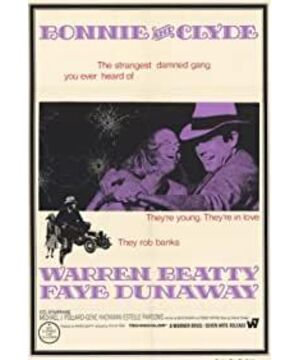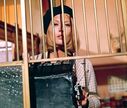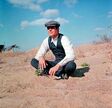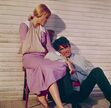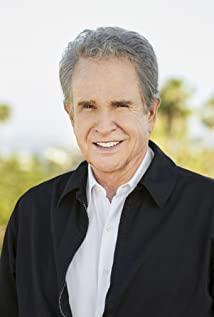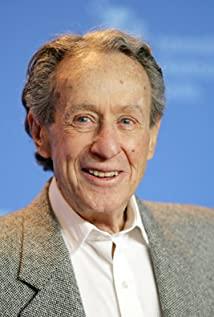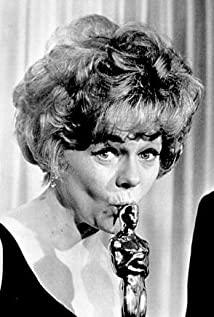This pair of men and women burned and robbed but became a generation of idols
. The Oscars ceremony at the beginning of this year to commemorate the 50th anniversary of the release of "The Male and Female Thief" was destined to be recorded in the film history. This is not because the films participating in the competition are too dazzling. , But because of an oolong-two guests who awarded the best film, Fei Donnavy and Warren Beatty, mistakenly awarded the best film to "City of Philharmonic", when the crew almost finished their acceptance speech At that time, it was revealed that the correct winner should be "Moonlight Boy". For a while, the whole world was played around by these two award-giving guests.
Who are these two award-giving guests? Perhaps the younger generation of movie fans may not be familiar with them, but when it comes to the famous "Bonnie and Clyde" (or "Bonnie and Clyde"), you will certainly not be unfamiliar. The rebellion and innovation of "The Male and Female" subverted Hollywood movies in the 1960s, and these two award-giving guests are the heroes and heroines of this movie! Fifty years later, they used this method to declare to the world, consciously or unconsciously, that this pair of desperate mandarin ducks who burned and looted could still disturb you "turning the earth upside down"!
"The Male and Female" is a movie that fans can’t get around, even if it’s just because of the movie’s brilliance; "The Male and Female" is also the type of film that film researchers care about most, because it is a film that connects the past and the next. Affected the development process of film history.
The film premiered on August 13, 1967. At that time, Hollywood films were still a platform for traditional values. The young generation after the war was tired of those conservative ethics and outdated film techniques, and off the screen, Naked reality thorns before the eyes of this generation. The Vietnam War quagmire, the Beatles swept the world, the civil rights movement, sexual freedom, the shadow of the Cold War, and the threat of nuclear bombs. The values of the fathers’ generations have been helpless against reality. Rebellious emotions permeated the young people. The leather life is the "political correctness" in their hearts.
And the art form that is most closely related to society, film, will inevitably become the best cultural carrier for venting this emotion. The new wave of film movement that writes the spirit of the times has been surging in Europa, and the younger generation in the United States has long been ready to move.
At this time (in the 1950s and 1960s), Hollywood's internal structure has also undergone tremendous changes. After experiencing its golden age, the eight major Hollywood studios have gradually declined: Raidenhua withdrew from the stage of history, the American Music Company (MCA) acquired Universal, United Arts was acquired by Pan Am, and Warner became Kenny National’s A subsidiary company, the leader MGM, also suffered a loss. Although it relied on "Benxu" for a brief period of resurgence, it was still changed hands by capitalists.
The infamous Hayes Code was formally abolished a year before the release of "The Male and Female Thief", which cleared the way for the violent elements of the film. Hollywood is at a turning point in history.
Outside of Hollywood, the American independent film movement is surging, and many younger generations who have participated in independent films have gradually entered the Hollywood system to work. Their vision and demands are destined to inject new vitality into Hollywood. "The Male and Female Thief" is a movie born under this historical background. From her beginning, New Hollywood has begun to make its way onto the stage of history!
Before the filming started,
Trevor Godard had the opportunity to direct
time back to the early 1960s. The young artist David Newman had just graduated from university and joined a magazine called "Esquire" as editor. This is a fashion and culture magazine, focusing on things related to popular culture, such as movies, music, fashion, and so on. Here he met Robert Benton, the artistic director of the magazine. The two hit it off because they were both obsessed with movies. Who would have thought that this friendship not only changed the fate of the two, but also rewritten the development of American cinema.
At that time, a name Truffau traveled across the oceans to the American continent. His films began to be shown on a small scale in some American theaters. As media professionals in cultural magazines, the two keenly captured the development of world cinema. new trend. Later in the theater, they continued to absorb more nutrients from movies from all over the world: Godard, Rohmer, Rivet, Varda, Bergman, Milos Forman, Kurosawa Akira, Mizoguchi Kenji... this The list can be even longer. They watch at least two movies in the theater every week. Under the influence of these innovative movies, the classic Hollywood movies are so conservative or even pedantic. The passionate couple decided to do something. what.
Robert Benton grew up in Eastern Texas. Since he was a child, he knew the legends of those bandits, such as "Pretty Boy" Floyd, "Machine Gun" Kelly, "National Enemy" Dillinger and the like, and of course that Bonnie Parker, a pretty woman smoking a cigar and holding a pistol.
Both of them turned their attention to the woman and his accomplice Clyde. They planned to write the story of this dangerous couple into a script. The two came to Texas to conduct a field trip to this place where bandit stories were once staged. They even visited Clyde’s former teacher, who made the brandy and milk. The joke was told to them, and Clyde's brother told this old joke every time in the movie.
In 1964, the script of "The Male and Female Thief" was polished, but the two screenwriters were just Hollywood outsiders after all, and it was not so easy to find someone to film it. The two first sent the script to Arthur Payne, who later directed the film, but did not receive a positive response. So they decided to avoid Hollywood and directly found their spiritual mentor, Truffaut, the standard bearer of French New Wave films. Truffau is very interested in this rebellious and romantic story, but at this time he is preparing for his first color film, putting the dystopian novel "Fahrenheit 451" on the screen, and he has no choice but to transfer the script to the screen. Godard.
The two fledgling screenwriters are very excited, Truffaut can't, and Godard's filming is no problem! But Godard is notoriously difficult to serve. He actually requested that the film be filmed in winter, and the location must be in New Jersey, in the northeastern United States. The two screenwriters didn't know what medicine he sold in the gourd, because the story of the film took place in Texas in the summer, so the connection between the whole story and American culture would definitely not be restored, and the cooperation between the two parties fell through. There is also a saying that Godard feels that going to the United States to film must require financial support from Hollywood, and he does not believe that Hollywood will let go of his temperament to shoot. This kind of tricky approach may just be his way of refusing. If it were filmed in winter, we might not have seen the naked Fei Donnawei's sultry performance at the beginning of the film.
After traveling around France, I couldn’t find a suitable director. At this time, Warren Beatty came to Paris to visit. He learned the story when he visited Truffau. He saw the script and spent money. I bought the copyright of the script and planned to be a producer myself to shoot the film. In his opinion, it is most suitable for such an American story to be filmed by an American director, so the three returned to the United States to find suitable candidates.
The list of candidate directors almost includes the greatest directors of the era: William Wheeler ("Roman Holiday", "Benxu"), John Schlesinger ("Midnight Cowboy"), George Stevens ("Lang Heart is Like Iron"), Sidney Pollack ("Swimmer"), etc., but these directors rejected the project for various reasons. In the end, Arthur Payne, who refused the film, took over the film. He and the producer Warren Beatty once collaborated on "The Phantom of the Heart".
The other issue is the choice of the heroine Bonnie. Warren Beatty originally wanted his sister to play the role of the glamorous Shirley McLean in "Peach Apartment". But when Warren Beatty decided to play Clyde himself, he obviously needed a new heroine, Tasday Weld, Ann Margaret, Jane Fonda, Carol Linley, etc. The big-name actresses had intended to play Bonnie, but in the end it was the little-known Fei Donna Wei who won with smooth skin and white teeth.
"The Male and Female Thief" finally went into filming!
The
dual innovation of values and shooting techniques reflects the style of the times
. The story of "Big Thieves" took place in the 1930s during the Great Depression in the United States. The turbulent international situation and the economic crisis of the capitalist world influenced people's understanding of the world in that era. To some extent, the 1930s and the 1960s echoed remotely. Bonnie and Clyde are not so much bandits as hippies in the 1930s. When the economy generally cannot satisfy people’s sense of security, people will deny it. Traditional social ethics seek a new way out.
This is exactly the story and character foundation that "The Male and Female Thief" has become a new Hollywood debut. Bonnie and Clyde are not evil thieves. They belong to the bottom of society. Their banal lives and traditional values confine their hands and feet, but at the same time they have not satisfied their material and spiritual desires. Breaking through the cage of reality and pursuing true self and freedom is the justice in their hearts.
The director also took great pains to get the audience to establish more recognition with them. In reality, Clyde is a bisexual. He has a close relationship with Bonnie and another companion. In order to make the audience of that era more receptive, the director portrayed both the emotional scenes of the two. Romantic and cruel. At the same time, they also abide by their own philosophy of stealing, not robbing the poor but only robbing the bank, and never killing the innocent indiscriminately. Instead, the most violent scene in the film is the police besieging them.
One of the most impressive changes in the film is the setting of Clyde as a sexually impotent. The director and screenwriter boldly incorporate social metaphors into the characterization, and there are many rather ambiguous shots to express sex. While Bonnie and Clyde were chatting while drinking Coke, the director edited Bonnie’s peeping eyes with the shot of Clyde holding a gun, showing the sexual temptation and sexual insufficiency of Clyde. He can find the dignity of being a man. Fei Donnawei's raised eyes, slightly opened lips, and the motion of touching the barrel of the gun, accurately used the performance to convey the key metaphors in the film.
The blood relationship between the film and French New Wave films has been apparent from the very beginning. The first set of shots in the film is a montage of real photos of Bonnie and Clyde and the names of the two protagonists. It clearly expresses to the audience the authenticity of the "fictional" between the truth of the characters and the protagonist, and the story of the film. That is, what actually happened is distinguished from the traditional Hollywood like castles in the sky.
And the first shot after entering the feature film is a close-up of Bonnie's red lips, not the set shot of the big scene that is common in traditional narratives. We saw Bonnie, naked and looking at herself in the mirror, like a canary trapped in a cage, with no soundtrack, only suppressed environmental sounds. At this time, Clyde was stealing the car downstairs, and they immediately caught up with the conversation. Bonnie put on her clothes and fled the room as if she had found a way out. Thinking of her naked before, the director undoubtedly wanted to express Bonnie's new life. This is also the rebirth of Hollywood movies.
The innovation in technique is also reflected in other aspects. For example, when Bonnie reunited with her family, he used a soft light lens to shoot the whole scene, which created a dreamy effect visually. In fact, the sudden insertion of the scene lacked a clear explanation. Some people think This scene actually only happened in Bonnie’s fantasy, which also makes sense. In addition, Bonnie gave her own pendant to her mother in this scene, and Bonnie had never worn this pendant before.
The scene of Bonnie and Clyde being buried in a rain of bullets is the most talked about. In order to create a sudden and intense violence, the director also took precedence in the narrative to advance the encirclement and suppression actions of the TD police, giving the audience full psychological hints, stormy. The show of encirclement and suppression is only two minutes, but it can be called a classic in film history. The following is a detailed analysis of the inner mystery of this group of lenses for you.
1. After Crowder got out of the car, the director first cut the camera back to Bonnie in the car. Show the positional relationship between the two;
2. The camera cuts to Clyde;
3. Then cuts to the smiling Moss father, his expression changes suddenly when he sees something;
4. The camera immediately cuts to his subjective perspective, a car The car broke into the killing game under the cloth;
5. After the information was confessed, he switched back to Moss father, and his expression looked at Clyde anxiously;
6. The subjective shot of Moss father: the lens cut to gram Ryder;
7. A group of birds flying out of the jungle (signal to kill);
8. The camera cuts back to Clyde, and he looks at the birds with a smile;
9. The camera immediately cuts to the horrified eyes of Moss father when he sees the birds;
10. Following his subjective perspective, the camera cuts back to the flying bird again;
11. Bonnie in the car stretches
her head to look at the flying bird; 12. According to her subjective perspective, the camera cuts to the flying bird again;
13. The camera cuts back to Moss father , He looked down to the other side;
14. The camera cuts to a jungle according to his subjective perspective;
15. The camera cuts back to Moss father, his eyes wandered, observing the distance of the car that broke into in the lens 4, and judged the time of the fire ;
16. Moss father of subjective shots: car getting closer, killings will be staged;
17. Holmes father drilled into the bottom of the truck to protect themselves;
18. immediately cut to a shot Clyde noticed his abnormal behavior;
19. Bonnie also noticed his actions;
20. Moss father's body completely entered the bottom of the truck;
21. The camera cuts back to laugh at Clyde, who is exaggerating his behavior, but immediately realizes something, and her expression changes greatly;
22. The camera cuts back to Bonnie, who turned her head, and she also noticed the strangeness;
23. Bonnie’s subjectivity The camera, the camera cuts to the jungle in 13;
24. Cut back to Bonnie, she turned to look at Claude outside the car;
25. Bonnie’s subjective shot: Claude bent down to escape and cast his eyes on Bonnie;
26 .Crowder’s subjective shots: Bonnie looking nervously looking at Clyde;
27. Bonnie’s subjective shots: Clyde looked at Bonnie but has not yet reacted;
28. Crowder’s subjective shots: Bang Ni stared at him with a look as if the ending was already known;
29. The camera shot back, and Claude rushed towards Bonnie;
30. The camera cut to the jungle, and the machine gun began to shoot;
31. Claude was shot. ;
32. Bonnie shot;
33. cut back to the jungle, gunmen out of the barrel, crazy fire;
34. Claude fell to the ground;
35. Bonnie continued to shot;
36. Claude continued shot Fall down;
37. The camera jumps to Claude’s close-up, and continues to be shot down;
38. Cuts back to the middle and close shots, and Claude finally falls to the ground;
39. Bonnie is shot frantically;
40. Claude After she fell to the ground, she continued to be strafed wildly;
41. Che Bonnie was shot close-up and continued to be strafed;
42. Crowder fell to the ground and fell to the ground;
43. Bonnie’s mid-range shot continued to be strafed;
44. Panoramic shot, two people were in In the same frame, it was shot frantically;
...
In this two-minute play, the director finally used more than 60 shots to show the death of this doomed mandarin duck. Before the massacre, there was almost a set of static montages to show the reactions of the characters in a short period of time. Switching back and forth between the viewpoints, the viewpoint shifting is very intensive, and the actor’s performance is adjusted according to the change of the plot, the editing rhythm of the killing is getting faster and faster, and the fancy editing and upgrading shots are used to show that Bonnie and Clyde are being taken. The process of killing was exciting and quite tragic.
After the release, it caused controversy. The
film critics slandered Oscar for supporting
"The Male and Female Thief". After the release, the film critics of Old Antique were dumbfounded. No one thought that Warren Beatty and Arthur Payne would make such an "out-of-form" together. movie! The first to fire on the film was Bosley Crowther from The New York Times. He is one of the oldest film critics in the United States. He has written review articles for The New York Times for 27 years. The American audience (may also include the two screenwriters of "The Heroine") introduced post-war European art films. Rossellini, De Sica, Bergman, and Fellini are all his favorite directors.
Bosley is a leftist film critic. He called for showing more social responsibility in movies and opposing movies that promote violence. "The Male and Female Thief" is exactly the kind of movie he hates most-"meaningless"" A farce, mixed with cruel killings.”
Obviously Bosley also linked the violence in the film with the cruel killings in the war. He only saw the appearance of violence, but did not feel that it was the 1960s. Exaggerated acts of violence are presented on the screen in a dramatic way. The audience’s consumption of violence has nothing to do with good or evil. Besides, in addition to the killing at the end, other violent scenes are intertwined with the comical banjo. More feel that it is the absurd side of violence.
Bosley certainly did not expect that his critique of "The Male and Female Thief" ruined his fame and even ruined his film critic career. A large number of young viewers wrote to the "New York Times" to oppose him to denigrate "The Male and Female Thief", and other major media magazines also fought over. The media that supported the "murder couple" included Time Magazine and The New Yorker. "Newsweek" film critic Joe Morgenstern first stood by Bosley's side, and then fell to Bonnie and Clyde... The scuffle in the critics is evident. Bosley also "killed" his red eyes, and then wrote two more articles, criticizing the movie while even criticizing the current audience. In the end, the "New York Times" fired the veteran film critic Bosley, who became the last "victim" of Bonnie and Clyde "under the gun".
The market’s reaction most directly showed how young people like the film. The film earned a box office of US$50 million in the United States at a cost of US$2.5 million, and the global cumulative box office reached US$70 million. In addition to box office performance, Bonnie's short shoulder-length hair and the beret worn in the film became the standard for modern women at that time.
The rebellious image of Bonnie and Clyde is a subversion of the Hollywood film tradition. Although noir and bandit films have never lacked "bad guys" as the protagonists, few naked anti-capitalist bandits like them have been portrayed positively in the film. The target of the couple’s bullets was not an empty can, but an illusion of the American dream. They broke out of the screen and became a spiritual symbol of anti-system and counter-mainstream culture. These are all processed by filmmakers through cinematic rendering. In fact, there is not much connection with the real Bonnie and Crowder in history.
The conservative Oscar also made his own judgment on this bold film: the film was nominated for 9 Oscars, and won the best supporting actress and best photography.
More importantly, "The Male and Female Thief" is the first strong voice of the new forces in the Hollywood system, and the "Graduate" screened later in the same year cried out the hesitation in the hearts of that generation. The latter cost $3 million. Cumulative box office of nearly 105 million. The two traditional Hollywood rebels became a symbol of the spirit of the times, and Hollywood itself is profit-seeking. After the wind became clear, it quickly turned the bow to cater to the brand-new movie concept and spirit of the times.
Therefore, more and more young filmmakers are included in the Hollywood system. The new wave of aesthetics feeds Hollywood back. The seeds of new movies have taken root in the American continent. Dennis Hopper ("Easy Rider") and Martin Scorser Famous filmmakers such as Si ("Taxi Driver"), Francis Ford Coppola ("The Godfather"), and Brian de Palma ("Dawn of the Owner of Love") have successively stepped onto the stage of history...
View more about Bonnie and Clyde reviews


